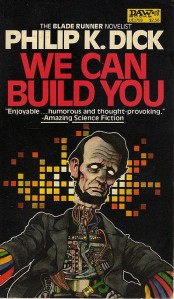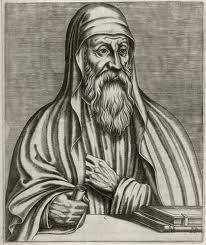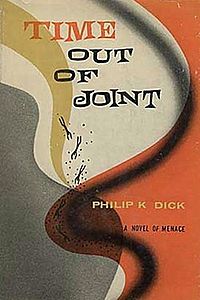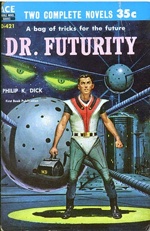We Can Build You links many of Philip K. Dick’s most common themes. The border between human and artificial is considered in a very straightforward and upfront way here, via conversations with the characters. The growing insanity of everyday life is the surprising major theme of the text, which is ostensibly about androids. The setting provides a clear picture of Dick’s ambivalence about post-scarcity, if it is based on technological or corporate dominance over humanity. Finally, through the protagonist’s treatment, we are even given a brief look at an alternative reality. Is it too much? Maybe. The systematic reader of Philip K. Dick might find that the way he throws ideas on the canvas and fails to develop those ideas adequately before moving on an irritation. He may not have known it, but he is actually foreshadowing the intellectual anxiety and restlessness of late capitalism.
Plot
There are actually three stories in We Can Build You. The first is the story of a company fighting against a corporate behemoth. The little man is Multiplex Acoustical System of America (MASA Associates), specializing in mood organs and musical instruments. The principals in the company are the protagonist Louis Rosen, his partner Maury Rock, Rock’s daughter Pris Frauenzimmer, and the mechanic Bob Bundy. They (Pris is the real engineer) develop a simulacrum, that is able to be programed with the memories and knowledge of another. Their prototype is Edwin M. Stanton. Their original plan is to refight the Civil War with robots who are not play-acting but really think they are the participants. They later build an Abraham Lincoln robot but Lincoln’s real-life mental illness makes him a different type, but as we will see mental illness is as commonplace as automobiles in this world. The land developer Sam K. Barrows wants to steal this technology. He uses Stanton’s autonomy and Pris’s idealization of Barrows to help acquire it, although his effort (a crude John Wilkes Booth) is inferior. Barrows wants to use these androids to settle the moon. The corporate shenanigans take up much of the novel. The second plot line involved Louis Rosen falling in love with Pris. Pris is a schizoid (an anti-social personality disorder that would – interestingly – turn someone into an emotional robot) and schizophrenic and has spent most of her life in institutions or as a ward of the government. Rosen is conflicted, since Pris is clearly incapable of emotion. The Abraham Lincoln robot seems more capable of emotional expression and empathy. His anxiety over this leads him to even question if he is not an android. When Pris leaves MASA for Barrows, Rosen becomes unhinged, planning to assassinate Barrows if he does not “release” Pris. The third plot line explores Rosen’s descent into insanity. The last quarter of We Can Build You sets aside the androids and considers Rosen’s treatment. His treatment involves the creation of alternative realities (the equivalent of a Rorschach test since the world is created from the patient’s subconscious). These mental realms tend to involve Rosen living a peaceful middle-class life with Pris, an utter impossibility in real life, considering Pris’ manipulative, anti-social, and cruel tendencies. Pris’ final return to the asylum after earlier being successfully treated and Rosen’s final realization that his mental illness may have been simply a rouse or too minor to waste the institution’s time.
Setting
Like many of Dick’s novels, We Can Build You is set in a world of corporate dominated post-scarcity. Rosen and Rock are worried about the labor market glut and are desperate to save the company, which is why they turn to building androids. Despite an overabundance of labor, there seems to be no shortage in the consuming potential of America. The original plan was to re-fight the Civil War with anrdoids. This is only possible in an economy well past scarcity. We are, however, given two models of post-scarcity. One reflected by Pris and the MASA Associates which takes post-scarcity and uses it to invest in craft. The androids they create are works of art. They are fully realized individuals and indistinguishable from the originals. They do not even realize the difference until it is explained. Barrows, looking for chattel to populate the solar system, wants to work in planned obsolescence for long-term profits. The Booth simulacra is not even capable of reciting Shakespeare. Rosen asks how long it took him to build that inferior product. “Where’s any painstaking fidelity to detail? Where’s craftsmanship gone? All that’s left is schlock, the killer-instinct planted in this contraption.”
Rosen is well aware that Barrow’s model is winning. He talks with Pris about how to destroy a yellowjacket nest. Pris tells him that the best way is to cover it in sand. The yellowjackets will work to clear the entrance but forced to bring the sand into the nest, they will gradually suffocate themselves. Pris says in conclusion: “We wake up. Why is there no light? We heard fo rthe entrance. All those particles, they block it. We’re frightened. What’s going on? We all pitch in; we try not to get panicked. We don’t use up all the oxygen; we’re organized into teams. We work silently. Efficiently. We never see daylight, Louis. No matter how many grains of sand we haul away. We work and we wait, but it never comes. Never.” We decorate our prisons.
While for many advocates of post-scarcity economics, including many anarchists, productivity is a path to human liberation. For Dick, the production/consumption cycle is simply one most chain enslaving people. Yet, Dick does provide the potential of resistance. They are able to prevent Barrows from stealing the simulacra technology.
Human-Technology Divide, An Asylum on Every Corner
Dick places the theme of the universality of insanity alongside the troubled human-technology divide. This works for me on a couple of levels. On one, does mental illness make us more like machines? In the case of Pris, her schizoid personality disorder does make her incapable of normal human empathy and interaction. Stanton and Lincoln are capable of strong emotion and empathy based on their emotional history, placed in as part of their programming. Dick also introduces the question of slavery. (Using Lincoln as a character makes it clear that Dick did not want us to miss the significance of this.) When approaching Barrows, MASA Associates makes the case that they cannot own Stanton because of the laws against forced labor and slavery. Barrows sees machines and non-human and therefore his ownership of Stanton is not affected by those laws. In contrast to this, Pris and Louis feel like slaves within an endless consumption-production cycle. Both were placed in an authoritarian institution. Internally, the asylum is not significantly different from the prison (Erving Goffman, Asylums).
In the world of We Can Build You, mental illness is not a rarity. One in four spent time in an asylum. Later, a psychiatrist points out that 1 in 9 is actively mentally ill. Mental illness is the primary public health concern of the state. We are not far from this now. As soon as the ADHD epidemic seemed to be moved to the back-burner we now have an epidemic of Asbergers. All the while, millions of sex addicts are living their sorrowful lives (Shame, Black Snake Moan). I suspect we will have a new personality disorder in a few years that will require another generation to be medicated or institutionalized. I am not an expert on this stuff. Just an observer but I have real concerns about the potential of human freedom when mental illness becomes indistinguishable from yearly fashion trends. At least our passion for consumption can be contained by a simple purchase and does not require dependence on an institution or mind-altering medication.
Note on the Project
I am preparing to move to Taiwan, probably permanently. I need to have all my books boxed by the end of April. If I am skipping some major works for now (Ubik, VALIS, Scanner Darkly) it is because I have those on my Kindle and can work on them while I deal with the transition. It may not be until the end of June that my library follows me to Taiwan. I also took some works off the my master list. This is because neither I nor my library system own a copy. I may get back to them later. At this pace, I will finish up with PKD around mid-May and return to my work on The Library of America. What I work on will depend on the library situation in Taiwan. I know I can get some of the LOA in Taiwan via libraries but I never saw them in stores there. I will probably need to have them shipped. As long as there is not a shipwreck, I should have enough volumes to last me a couple years before it comes to that. By then the People’s Liberation Army may very well have made this blog moot.
















